SCERT AP Board 8th Class Social Solutions 11th A Lesson National Movement: The Early Phase 1885-1919 Textbook Questions and Answers.
AP State Syllabus 8th Class Social Studies Solutions 11th Lesson National Movement: The Early Phase 1885-1919
8th Class Social Studies 11th Lesson National Movement: The Early Phase 1885-1919 Textbook Questions and Answers
Improve your learning
Question 1.
Correct the false statements:
a. In the early phase of Indian National Congress it included only people from Bombay.
b. Indian industrialist began to establish companies in different parts of India.
c. People in India expected that India would become democratic after the First World War.
Answer:
a) In the early phase of Indian National Congress it included the intellectuals all over the Nation.
b) Swadeshi Movement gave tremendous impetus to Indian industry.
c) Everyone expected that the British would accept the just demands for democratic rule in India and bring in the constitutional reforms.
![]()
Question 2.
Write an imaginary dialogue between the extremist and moderate activists of Indian National Congress in the context of their a) main demands; and b) mode of mobilisation.
Answer:
Lucknow Meeting
Moderates: We will request them to increase our representation in our ‘Imperial Ligislative Council.
Extremists: Why should we request them ? Choice is ours. We need not request them. We should chose them and send out from our country.
Moderates: Let us agree it. But upto that we should pass our time. Our people should be in authority for our safety. So we are requesting to conduct civil services in our country.
Extremists: We cannot have independence with the policy of pray, petition and protest. We cannot get the support of our people also. Let us unite together and fight. Let us take the problem to the public. Let us have their support. We will neck out the British soon.
Moderates: Okay. We change our way as peoples’ way. Let us join our hands to them and have our independence.
All: “Vande Mataram” “Vande Mataram”.
Question 3.
After reading this chapter, Mariamma thinks that the early phase of national movement was largely participated by educated Indians. And many of their ideas were of western origin. Would you agree with her? Give reasons.
Answer:
Yes. I agree with her.
Reasons:
- With the growth of English education in some major cities, a new consciousness, began to develop.
- They opposed the inequalities and injustices of the old social system.
- They pointed out the exploitation and injustice caused by the British rule and fought to end it. Thus they sprouted the nationalism in the minds of common people.
![]()
Question 4.
Why was it important to understand the economic impact of British rule in India?
Answer:
It was important to understand the economic impact of British rule in India to understand
- how they were draining our resources.
- how our crafts lost their status.
- the reasons for our poverty.
Question 5.
What do you understand by swadeshi? What were the major areas of its impact?
Answer:
I understood Swadeshi ‘as goods produced in our own country’.
The major areas of its impact were:
- Political
- Social
- Industrial
- Foreign trade
- Spiritual
- Business (national trade)
- Education
- Cultural
- Judicial
![]()
Question 6.
How did different parts of the country and people respond to division of Bengal ?
Answer:
One major trigger for the movement was the proposal for partition of Bengal into East and West Bengal in 1903 by Lord Curzon. The Nationalists immediately saw this as a political act by the government to divide the Bengali people and also weaken the national movement. Even the ordinary people of Bengal were enraged by this act and took to streets to protest against it. There were massive protests, petitions and campaigns but they were not heeded to and the government partitioned Bengal in 1905. Several protest meetings were held and together they decided to boycotting English cloth and salt. There was a tremendous mass response to this call. Boycott and public burning of foreign cloth, picketing of shops selling foreign goods became common in remote corners of Bengal as well as in many important towns and cities throughout the country. Women refused to wear foreign bangles and use foreign utensils, washermen refused to wash foreign clothes and even priests declined offerings which contained foreign sugar. This spontaneous unity of diverse social groups was the basis of Indian nationalism. The early nationalists were successful in germinating this nationalism.
There was also a call for boycott of all government institutions like schools, colleges, courts etc. People set up Swadeshi schools and colleges and parallel courts in which they settled their mutual disputes. Thus the people responded to division of Bengal.
Question 7.
Locate the following in map India:
- Calcutta (Kolkata)
- Madras (Chennai)
- Bombay (Mumbai)
- Lucknow
Answer:
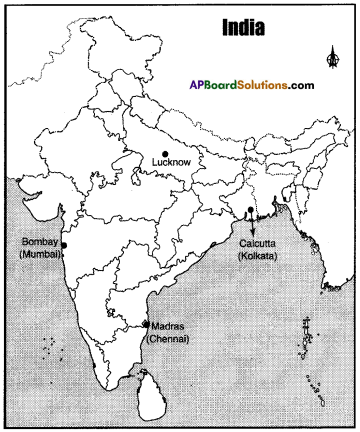
![]()
Question 8.
Locate the following in the World map:
- Britain
- France
- Russia
- Germany
Answer:

Question 9.
A few leaders like Gandhiji, Tilak, Subhash Chandra Bose, Bhagat Singh sacrificed their lives for the sake of our nation.
What would have happened, if they did not do so?
Answer:
The British would have plundered our nation’s wealth more and more. The people of our country would have been suffered as slaves under the British rule and India would have become a very poor country.
![]()
Question 10.
Are there any movements taken place in your region recently? Why?
Answer:
Recently ‘Jai Andhra’ movement took place in our region on the occasion of separating Telangana from Andhra Pradesh.
Reasons:
- Regional imbalances
- Political ill healthness
- Lack of broad outlook
Project
Question 1.
Collect photos of national leaders who participated in freedom struggle and prepare an album. Make a report on it and present in the class.
 Answer:
Answer:
Report :
- The National Movement in India was an important epoch in the history of India and it helped to weld diverse people and sections of society into one nation. Ail the sections came together to not only fight aganist the British rule but also to build a new country.
- The seeds of a new consciousness were sown in the second half of 19th century.
- The educated Indians, after understanding the nature of British rule and enter into free-dom movement.
- The early leaders like Dadabhai Naoroji, Pherozeshah Mehta, W.C Banerjee, etc, they realised that the unity of all people could be built only by accommodating the special requirements of different regions and religious communities of India.
- The famous leaders they left their jobs and families and move throughout the country given speeches and create awareness about Indian Independence and to send out the British from India.
- They promote democratic ideas among the people.
- They gave call for Swadeshi and boycott for foreign goods.
- After First World War they raised their voice against British and started movements very actively.
- Like this so many of our leaders participated in the freedom movement and sacrifice their lives and given a great freedom for us now we are enjoying that.
- If they did not sacrifice their lives for the sake of our nation, then we would not have achieved freedom from the British rule and would have continued to be their slaves till date.
8th Class Social Studies 11th Lesson National Movement: The Early Phase 1885-1919 InText Questions and Answers
![]()
Question 1.
Imagine yourself as a student participating in a burning of foreign cloth. Describe what all would have happened on that day and your feelings at that time. (Textbook Page No. 126)
Answer:
My name is Sarath Chandra Chatterji. I was studying B.A. – I year in Calcutta College. Britishers occupied our country. They were trying to cut it into pieces as a cake. Till now we, the Indians, are in faith of Law of ‘Karma’. But we wanted to teach them a lesson. We planned to burn the foreign goods in our area.
It is our centre. The roads were clear upto 2 p.m. But all of sudden they were crowded. In the junction we lit a fire. We, all our neighbourhood, threw the foreign cloths and all the foreign goods into the fire. The fire brightened the sky. We gave our slogan ‘Vande Mataram’ and it sounded as ‘Om’. Our eyes were flooded with tears. The light of the fire revealed our attitude towards freedom to the world. Our anger frightened the British.
We decided to attain freedom even by sacrificing our lives.
“Vande Mataram”
“Vande Mataram”
Question 2.
If authorities do not agree to the just requests of people, what do you think the people should do? (Textbook Page No. 126)
Answer:
The requests should be not only just but also legal. If the authorities do not agree, one should oppose them democratically and attain them.
Question 3.
During that period there were massive movements of people who opposed the war
and asked their governments to cease fighting with other countries and restore peace. Do you think it was correct? (Textbook Page No. 127)
Answer:
Yes, I think it was correct.
The reason:
India had no rivalry with Germany or its alliance. We were appealing and fighting with the British to quit India. So it seemed jovial to fight for them. So I think it was correct.
![]()
Question 4.
Do you know of any association in your village or town which discusses problems faced by all the people (not just of one caste or community)? What do they discuss? What suggestions do they have for solving those problems? Discuss some examples in the class. (Textbook Page No. 122)
Answer:
Yes, we have one such association in our village. It is ‘Mytri Sangham’. It has its members from all the levels and categories. This association looks after the law and order in our village. They conduct discussions at the time of critical problems. They intimate the issues to police authorities in time. If the people fail to receive, protection or just, they would question the authorities also.
Their suggestions: If the enemy is strong and foolish, we should make him to listen to our words with our own tricks. Later we should gather our own majority. Then only we should fight with him.
e.g.: A tiger puts three steps backward when it starts its trial for hunt. That is the technique.
Question 5.
Find out more about the First World War and its impact on the lives of ordinary people. (Textbook Page No. 127)
Answer:
We can say that World War – I broke out between the capitalists and communists. It continued for nearly 5 years. All the nations with its people took part in it. More than 10,000,000 people lost their lives. 6,500,000 were injured. 6,000,000 were missed. Many nations suffered a lot. Whole world shivered with the feeling of insecurity.
![]()
Question 6.
Why did the early nationalists believe that the British were responsible for the poverty and famines in India? (Textbook Page No. 124)
Answer:
Early nationalists were educated and intellectuals. They studied the economic impact of the British rule. They understood that the British was draining the Indian wealth in many ways.
e.g.: Enabling cheap selling of British goods in India and retraining Indian crafts and industries.
So they believed that the British were responsible for the poverty and famines in India.
Question 7.
Why do you think the early nationalists did not want to re-establish the rule of the old kings of India? Would it not have been better than the British rule? (Textbook Page No. 124)
Answer:
Yes. It would not have been better than the British rule.
Reasons:
- Early nationalists treated India as a nation. Old kings divided India into small kingdoms.
- The British rule was like hot pan, the old kings’ was like stove.
- Many old kings were foreigners. ‘Swadeshi’ was their goal.
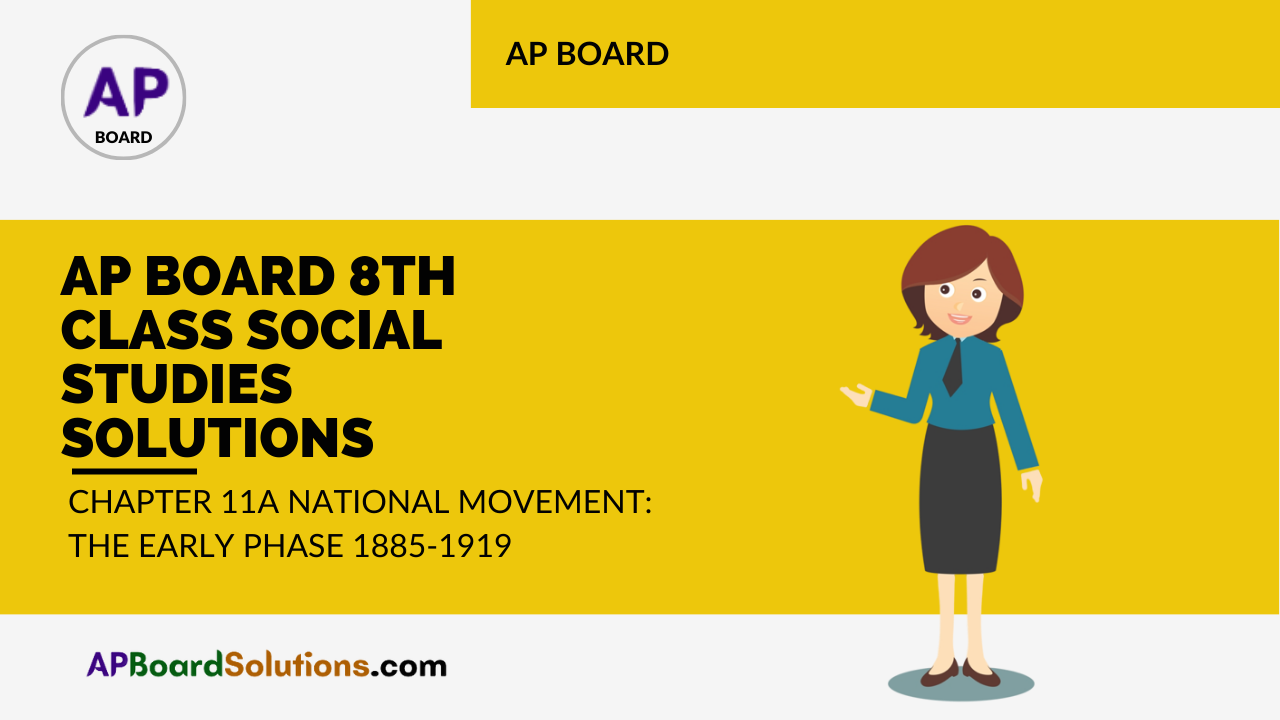
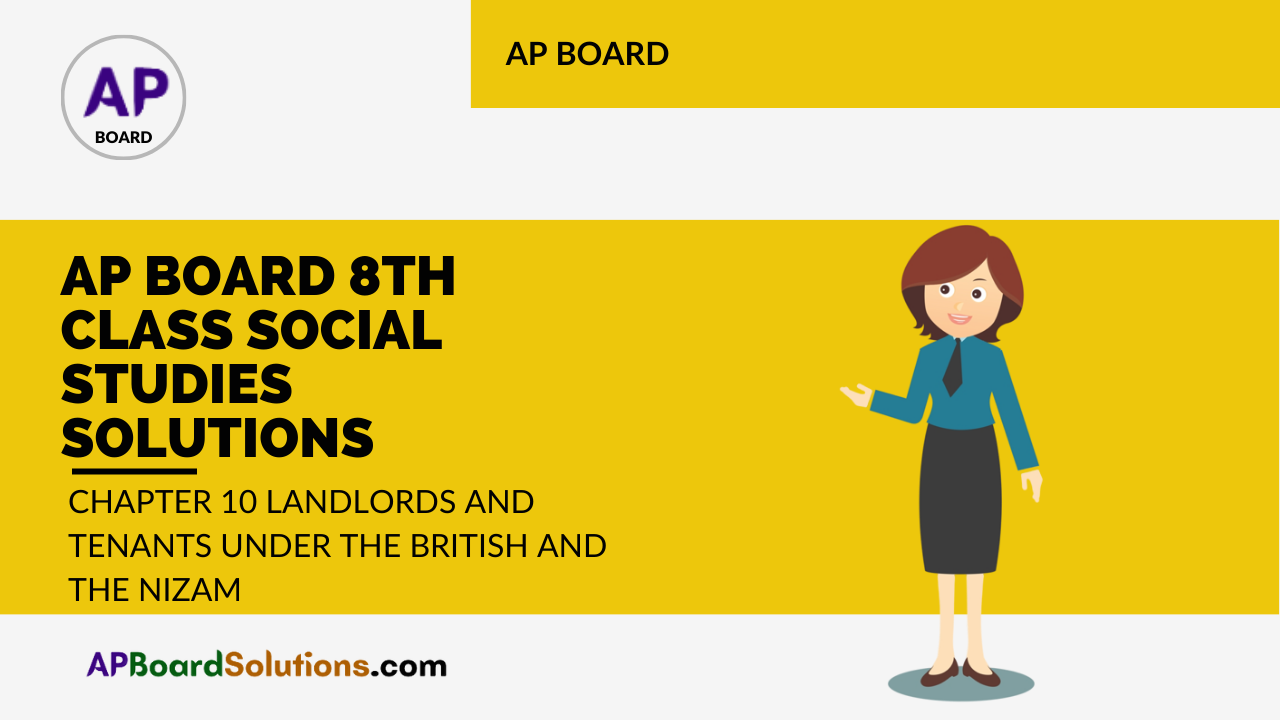
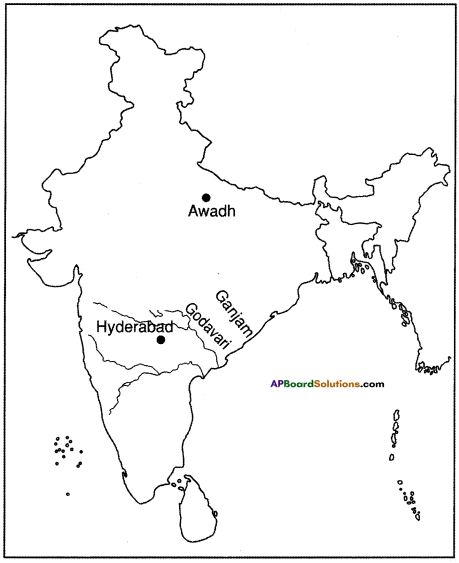


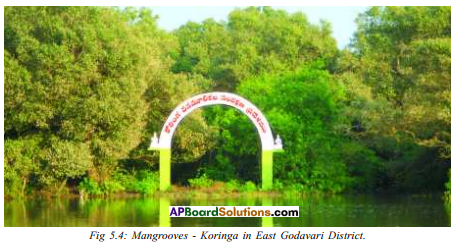
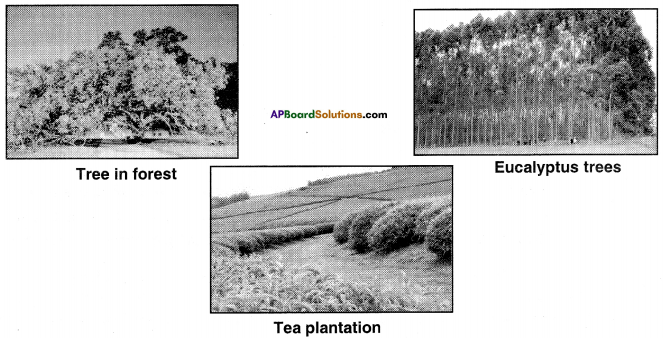
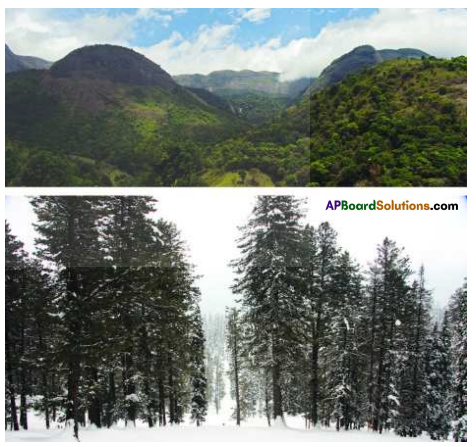 Answer:
Answer: Write a caption on the above cartoon in the contest of forest. (Textbook Page No. 50)
Write a caption on the above cartoon in the contest of forest. (Textbook Page No. 50)

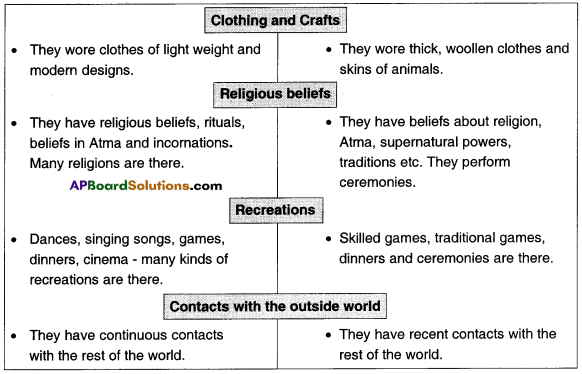




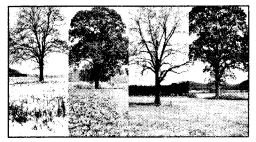



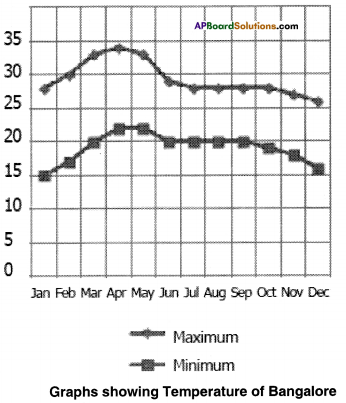 a) What is the average highest temperature in July?
a) What is the average highest temperature in July? Radiation: When a body gives out energy it is called radiation.
Radiation: When a body gives out energy it is called radiation.
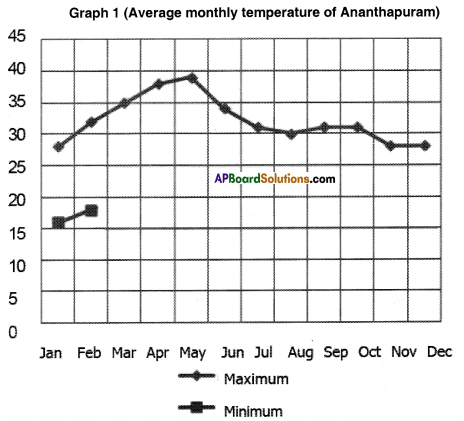
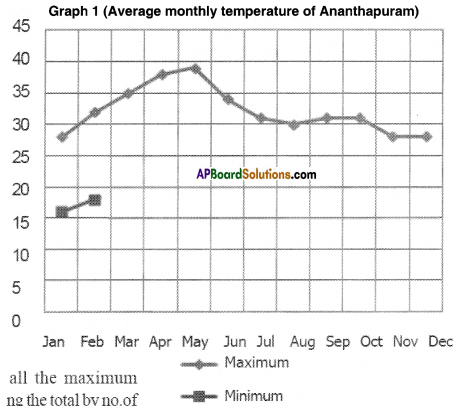
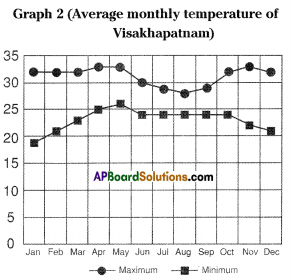
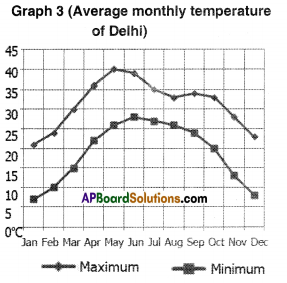
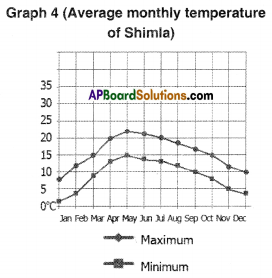
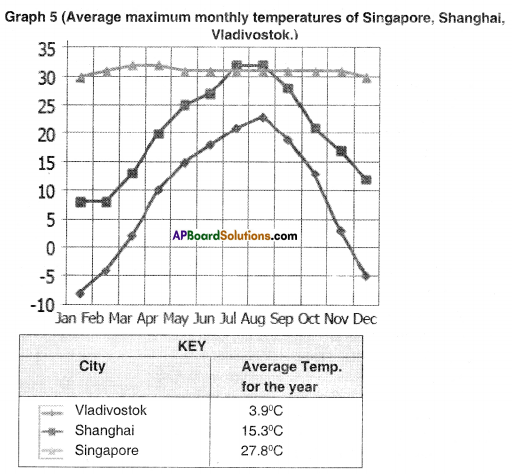


 Note: To read this map we should turn it upside down.
Note: To read this map we should turn it upside down.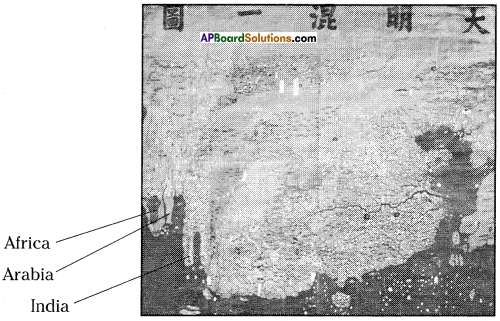 Answer:
Answer:



